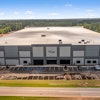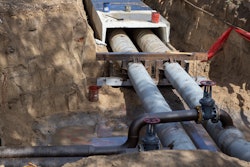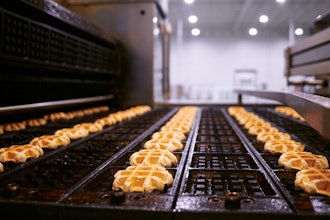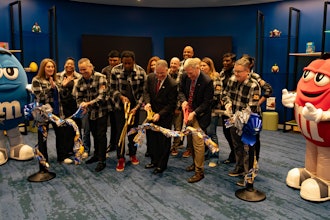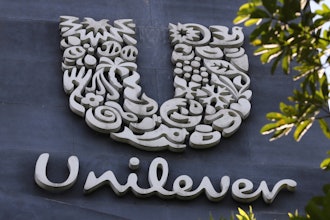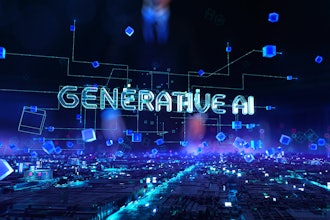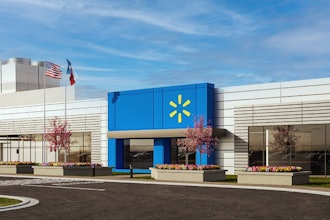
This is Part II of a two-part series. For Part I, click here.
Generating nitrogen in-house and on-demand is a safe, cost-effective approach for many tank blanketing and modified atmosphere packaging applications.
On-Demand Nitrogen Generators
On-demand nitrogen generators are typically free standing, housed in a cabinet or skid mounted, depending on the size of the application. Users need only connect a standard compressed air line to the inlet of the generator and connect the outlet to the nitrogen line. Standard features often include high efficiency coalescing prefilters with automatic drains and sterile grade afterfilters.
There are two on-demand technologies: membrane gas generators and pressure swing adsorption (PSA) generators. The choice of generator largely depends on the purity of nitrogen needed for the chemical being blanketed. Typically, applications such as fire prevention need nitrogen of 95 to 98 percent purities and can use membrane generators. Applications such as the blanketing of oxygen sensitive foodstuffs need a higher purity stream and require the use of PSA generators.
As an example of how membrane nitrogen generators work, the Parker Balston membrane nitrogen generators use a proprietary hollow fiber membrane technology that separates the compressed air into two streams. One stream is 95 to 99 percent or higher pure nitrogen, while the other stream contains the separated oxygen, carbon dioxide, water vapor and other gases. The generator separates the compressed air into component gases by passing the air through semipermeable membranes consisting of bundles of hollow fibers. Each fiber has a circular cross section and a uniform bore through its center. Compressed air is introduced into the bore of the membrane fibers at one end of the membrane module. Oxygen, water vapor and other gases permeate the membrane fiber wall and are discharged through a permeate port at low pressure, while the nitrogen is contained within the membrane and flows through the outlet port at operating pressure. The nitrogen gas steam is very dry, with dewpoints of at least -58 F (50 C). Membrane nitrogen generators need no electricity to generate nitrogen so they can be used in Class One explosion-proof environments without any concerns.
For an example of how a PSA nitrogen generator works, Parker equipment uses high efficiency prefiltration to remove all contaminant from the compressed air stream down to 0.01 micron. The filters are followed by dual beds filled with Carbon Molecular Sieve (CMS). In one bed at operating pressure, the CMS absorbs oxygen, carbon dioxide and water vapor. The other bed operating at low pressure releases the captured oxygen, carbon dioxide and water. Cycling the pressures in the CMS beds causes all contaminants to be captured and released, while letting the nitrogen pass through. A final sterile grade filter assures removal of any microbial contamination. Users can easily set purities with a flow control valve. The DB-30 nitrogen system, for example, produces a flow of nitrogen of at least 1,530 standard cubic feet at 99.9 percent purity. The unit can achieve higher flow rates if gas of less purity is acceptable. As flow is reduced purity increases up to 99.999 percent. A built-in oxygen monitor measures the oxygen concentration of the nitrogen stream. The system requires a minimum feed pressure of 110 psi and can operate at pressures up to 140 psi. The resulting nitrogen has a dewpoint as low as -40 degrees F (-40 degrees C).
Conclusion
Compared to other supply methods, on-demand nitrogen generators provide significant benefits by increasing the safety of handling the gas. Both membrane and PSA units produce nitrogen at precise purities, flow rates and pressures. In addition to providing a significant cost savings, nitrogen generation in-house represents a sustainable approach to the supply of nitrogen. Gas industry sources indicate that an air separation plant uses 1976 kJ of electricity per kilogram of nitrogen at 99.9 percent. On-demand nitrogen generation helps reduce the generation of greenhouse gases. Compared to third party supplied bulk nitrogen, generation of 99.9 percent nitrogen in house with a PSA system uses 28 percent less energy. This means fewer greenhouse gases are created by the generation of electricity than with a typical nitrogen generator. At a purity of 98 percent, the energy required for in-house nitrogen consumes 62 percent less energy. Therefore, in-house generation creates 62 percent fewer greenhouse gases from electrical power at that purity.


